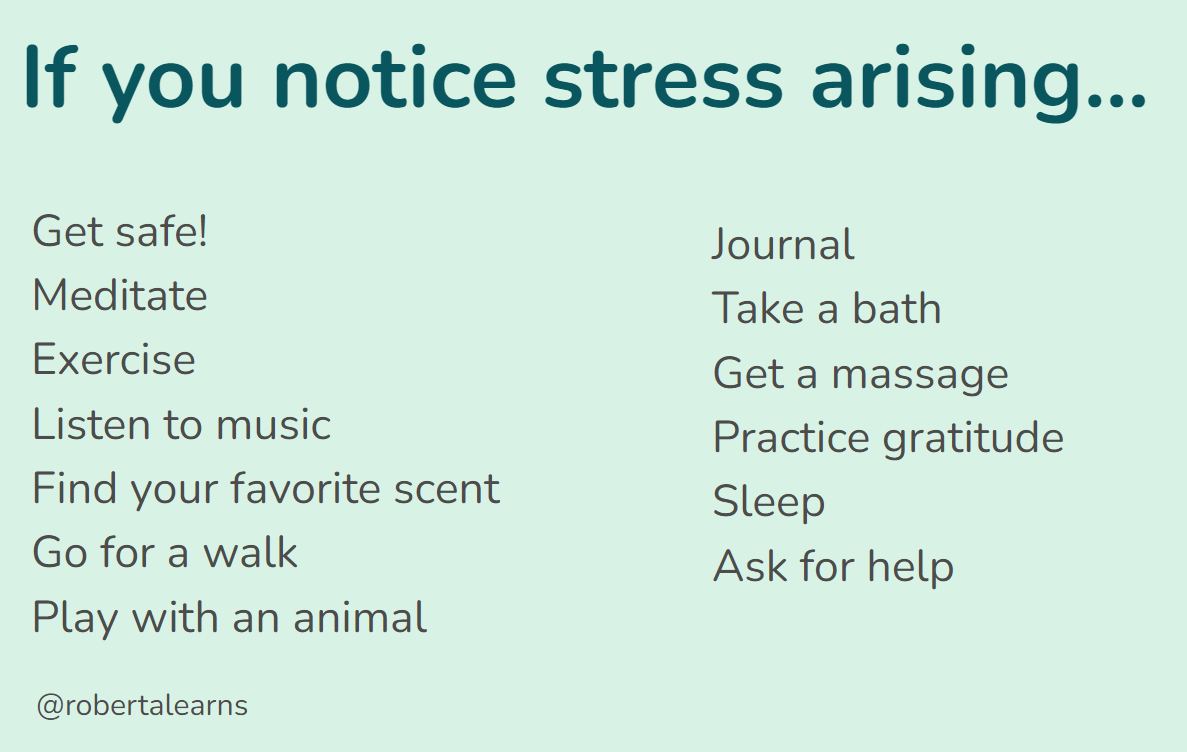Battling burnout? Check out these techniques to reduce stress
As leaders, stress is inevitable.
Your boss sends you a quick message: “Got 5 minutes?”
Immediately our body becomes activated, our brain recognizes it as a threat and sends a signal to the hypothalamus. Our body released stress hormones like cortisol and adrenaline. Our breathing, blood pressure, and heart rate increases.
This response has protected us historically. When we were hunter-gatherers its how we stayed safe from predators, but now that we’ve evolved, our bodies can’t detect the difference between a 4pm message from our boss and an actual threat, so we interpret it as the same. And over time if we’re in this heightened stress response it can become chronic. It can lead to aches and pain, exhaustion, trouble sleeping, headaches, muscle tension, digestive issues, anxiety, depression, and even panic attacks.
As a leadership coach and trauma-informed mindfulness teacher, I’ve asked hundred of leaders what the biggest challenge facing their work is. Time after time, I hear things like:
I'm exhausted from going through all of the change, pivoting directions, and adapting to the team
I’m struggling with feeling burned out I feel exhausted, overwhelmed, frustrated, there's no energy left. I feel irritable
Work feels like a grind, it’s not enjoyable
Personally, this all seems so familiar. Stress and anxiety have been my constant companions in life. I’ve often identified as an anxious achiever, meaning I’ve used these to my advantage, until it wasn’t an option anymore. In 2018, I began suffering from work-induced panic attacks and suffered from a traumatic injury. At the time, I was so in my head about work that I fell down the stairs and broke my ankle. It took 2 surgeries and 9 months until I could walk again.
Many don’t hit this extreme but one thing is clear: The last few years have been a lot and so many people are struggling. I have seen endless news stories about market shifts, mass layoffs, and more. What many are experiencing is a loss of hope. The leaders who have managed to survive the impact are often being asked to do more with less. They’re suffering from months to sometimes years of burnout.
McKinsey, defines burnout as an occupational phenomenon, driven by chronic imbalance between job demands and resources. If there’s a disconnect, it’s often correlated with anxiety and depression. Some characteristics of burnout are: extreme tiredness, difficulty concentrating, difficulty with cognitive and emotional processing.
Fortunately, as leaders there are techniques that you can use to combat burnout.
Create safe spaces: Learn to recognize stress triggers and give yourself permission to step away. Sometimes a brief pause can make all the difference
Embrace embodiment: Engage in activities that reconnect you with your body - meditation, exercise, music, walk, play, massage, or simply a good night’s sleep
Seek support: You’re not alone. Talk to friends, your partner, even your manager. Sharing the burden can help lighten the load
Gratitude Journaling: Cultivate gratitude, it’s a powerful antidote to stress
Finally, what we often get wrong about burnout is that we assume it’s an individual experience, something for one person to fix and get better on their own but we couldn’t be more wrong. This puts the burden on the individual. It’s a systemic issue and the responsibility lies within organizations to foster supportive environments. Senior leaders, I encourage you explore the Surgeon General’s Workplace Wellbeing Report for invaluable resources for your teams and organization.

